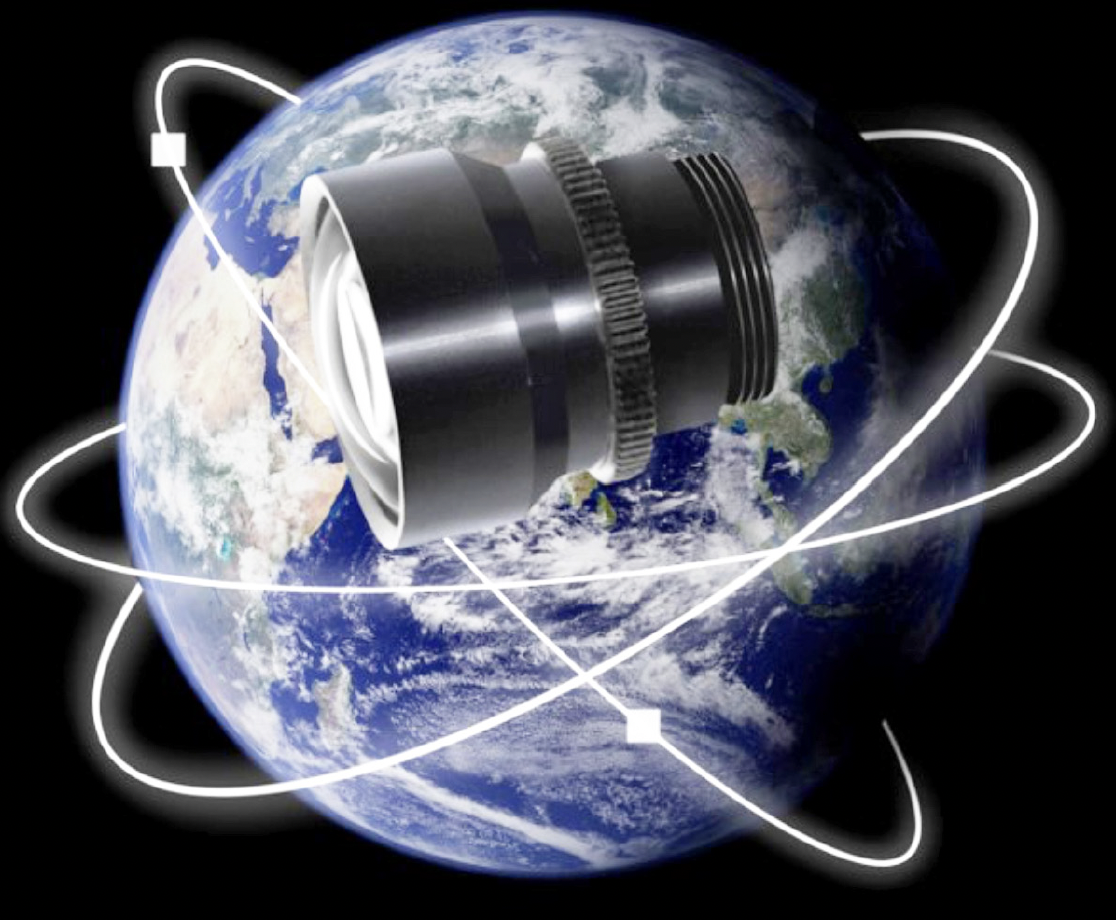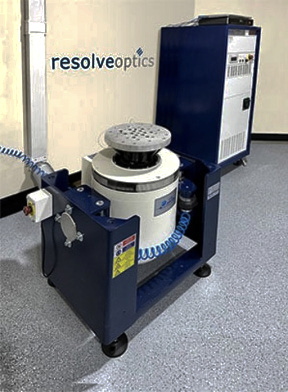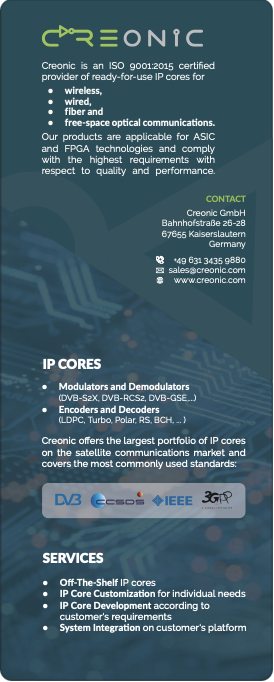Mark Pontin, the Managing Director of Resolve Optics, offers his thoughts regarding space ready optics.

What are the trade-offs when specifying space ready optics?

Mark Pontin
Mark Pontin
Designing high performance optical systems and individual lenses for space projects is something that UK-based Resolve Optics Ltd has done for more than 10 years. Lenses used in space applications must meet certain basic requirements to survive the harsh environment of space.
Mark, what are the key drivers that determine the weight and size of| space optics?
Mark Pontin
Launching payloads into space is an expensive business. Consequently, as satellites have decreased in size to reduce launch costs there has been the necessity for the optics that lie at the heart of these optical imaging platforms to also reduce in size and weight.
This is not always a straightforward task. If you are developing a camera system for a micro or nano satellite, we recommend incorporating a compact sensor and then it will be possible for us to keep your lens design compact as well. Being able to keep the size of the lens compact also helps it withstand vibration and shock during launch into space as the mass is small.
To ensure your satellite optics are sufficiently robust, all elements in our space- ready optics are secured and unable to break loose when subjected to the rigours of launch and other environmental factors.
What are the implications of specifying optical performance over a wide spectral range or a specific waveband?
Mark Pontin
Creating broadband lenses has been something of a ‘holy grail’ for spaceborne optical systems. Specifying a wide bandwidth, for instance from the UV through to the Infrared, will always be a challenge for an optical designer.
Because of the considerable shift in optical focus at different wavelengths this means that you can only have one end of a broadband spectrum in focus at any time. We can though significantly improve broadband performance by reducing the required bandwidth or reducing the aperture to increase depth of focus.
To create wide bandwidth optical systems will always require design compromise which is why an in-depth design stage discussion is required to ensure that a customer’s main optical goals are met.
How do optical requirements such as high resolution or long focal length impact space ready lens design?
Mark Pontin
Optical resolution refers to the ability of an imaging system to distinguish and capture fine details in an object or scene. Resolution is a measure of how clearly a camera or sensor can resolve small, closely spaced features as distinct and separate elements in the final image.
This is why high-resolution optical designs are appealing. High resolution optical designs typically require more elements to allow for the correction of aberrations. Of course, more elements typically require more space so the size and weight of your lens will increase.
Focal length is crucial as it determines a lens’s field of view. The longer the focal length, the narrower the area of the scene captured by the lens. Creating a lens with a long focal length necessitates increasing the length of the design in order provide the best performance.
There is an old rule in optics that states that a lens will want to be as long as its focal length. While this is not strictly true, it is an effective way to think about it if you’re short on space for the optical product you wish to deploy into space.
In what type of spaceborne applications do I need radiation resistant optics and why?
Mark Pontin
Radiation in space is generated by particles emitted from a variety of sources both within and beyond our solar system. Radiation effects from these particles will not only degrade standard lenses but can also cause complete failure of the optical systems in space vehicles or satellites.
As levels of cosmic radiation vary according to Earth orbit — the need for radiation resistant elements in a spaceborne optical design will be determined by the orbit you wish your satellite to operate in and the mission duration. You can also just consider mission duration on its own.
Standard optical glass will start to go brown as soon as it is exposed to a source of cosmic radiation. The color change is not instant, but it will get
progressively worse over a period of weeks. If your mission is scheduled to be active for less than 1 month, then you could probably get away with standard glass optics. Any longer and we would be recommending the use of radiation resistant glasses.
All optical elements within Resolve Optics space ready lens designs are made using cerium oxide doped glass or synthetic silica enabling them to withstand radiation doses of up to one hundred million rads and temperatures up to 55°C without discoloration or degradation of performance. These non-browning lenses provide high image resolution and minimum geometric distortion from 400 to 750nm.
What space ready optics customisation requirements do satellite manufacturers most commonly request?
Mark Pontin
Commonly lenses used for space applications are specified as using only known and approved materials. By this we mean materials that international space agencies, such as NASA and ESA, have approved and have been tested to ensure little or no outgassing. If a different material needs to be used in a satellite optical system, then we would need to provide vacuum bake out reports that shows the level of outgassing produced by that material. This evidence is passed to our customer who then passed up the chain to get approval for use.
As the operating environment in space is a vacuum, satellite manufacturers typically demand that all voids within a lens design must be vented. This is especially important as sealed voids between elements could cause the elements to break when the lens is exposed to the vacuum.
Optical systems in space will often also be subjected to large temperature variances. All our satellite lenses and optical systems are athermalized to ensure they maintain focus throughout the wide operating temperature range typically experienced in space.
When designing a lens mount and camera interface for a spaceborne optical system it is extremely important to ensure the mount is rugged enough to survive the rigors of a launch. Normally to ruggedise anything just means you make it chunkier and stronger, but for space application weight is always an issue.
Resolve Optics has considerable experience in designing mounts that are strong but light. All space ready lenses we supply for satellite applications are tested on our inhouse vibration test centre to ensure that they will 100% survive launch.
How did Resolve Optics become involved with space ready optics?
Mark Pontin
Optics for use in space and in the nuclear industry share some similar requirements but the most important is radiation tolerance. Over the last 25+ years we have become internationally recognised as a world leader in designing and manufacturing optical lenses for the nuclear industry.
The nuclear industry needs lenses that can withstand high levels of radiation over extended periods of time so that visual inspections can be carried out without a human operator. It was our in-depth knowledge and experience of designing robust, radiation resistant lenses that attracted the attention of space agencies and then satellite manufacturers.

Over the past 10 years we have seen demand for space ready lenses grow steadily and consequently Resolve Optics has invested in the infrastructure to fully support space industry customers.
What testing facilities does Resolve Optics have for space ready optics?
Mark Pontin
At our headquarters in Chesham, United Kingdom, we use state of the art MTF test facilities to generate reports that detail every aspect of a lens or optical system performance. All lenses, whether prototype or production are subject to optical testing to ensure they meet and exceed the specified optical performance.
In 2023, we invested in an advanced Vibration Test Centre that can carry our random, random on random, sine vibration and shock testing on individual lenses as well optical payloads up to 30kg. This vibration equipment is calibrated and maintained in accordance with strict ISO standards and allows us to qualify lenses and optical systems as fit for deployment in space.
We also have access to nearby vacuum and vacuum bakeout test facilities. No matter what testing is required on your optics to be deployed in space — Resolve Optics will organize and provide testing as required.
www.resolveoptics.com


